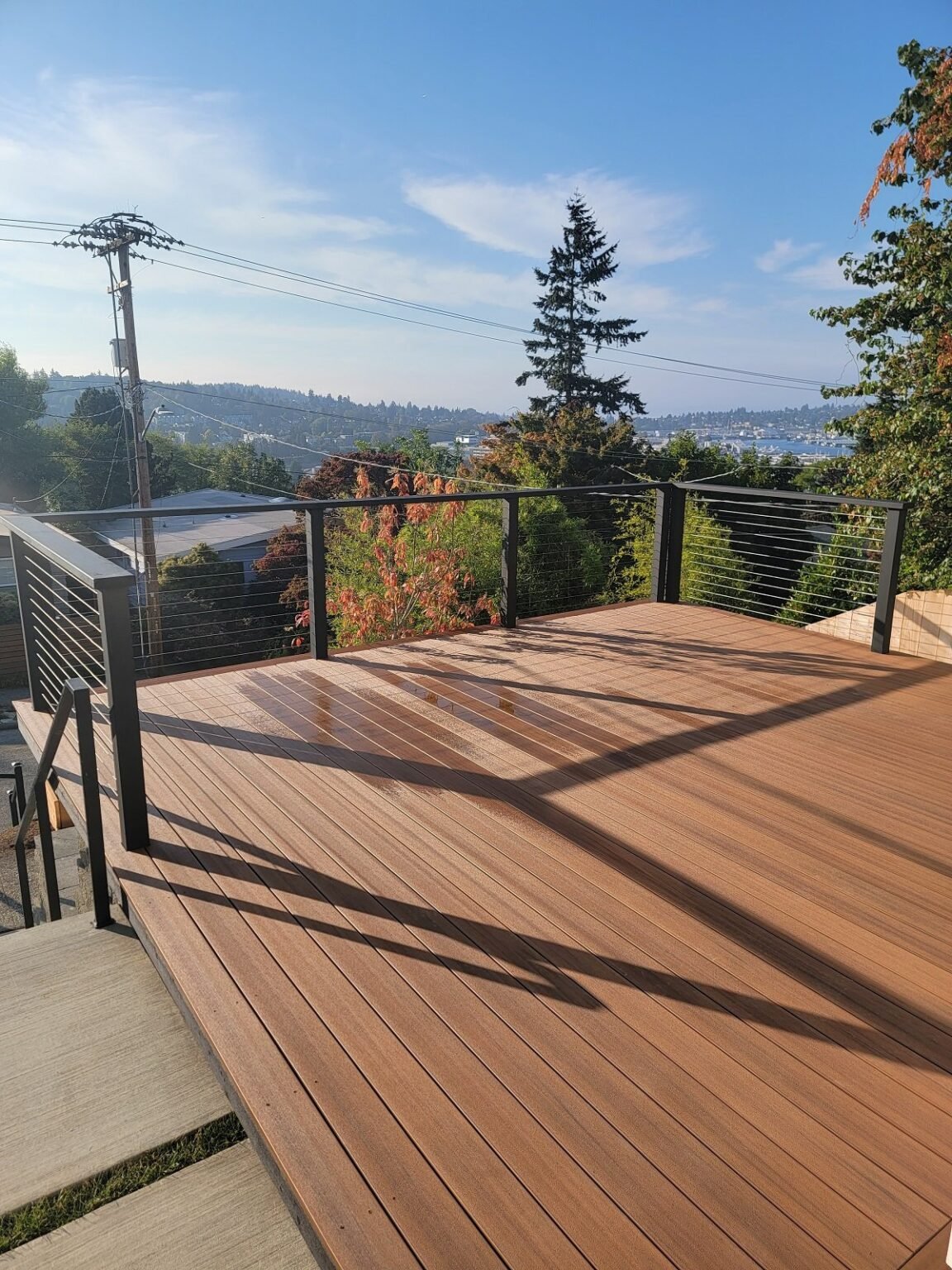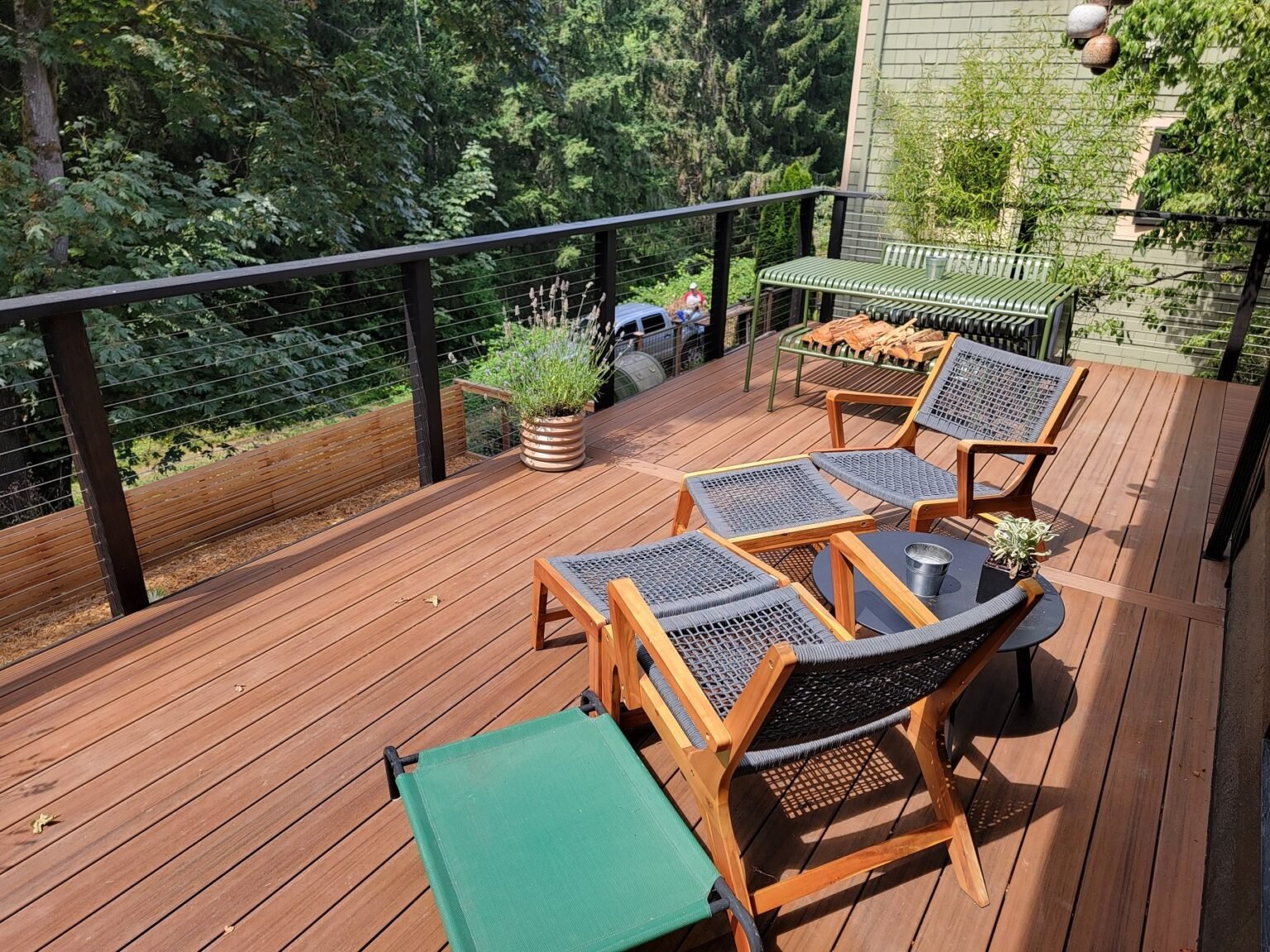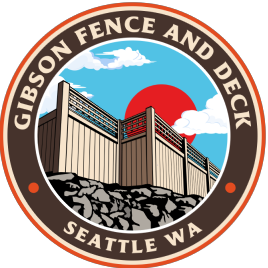How Much Does It Cost to Build a Deck?

Building a deck is a great way to enhance your outdoor living space and increase the value of your home. The cost to build a deck can vary widely based on several factors, including the size of the deck, the materials used, and whether you hire a professional or take on the project yourself. On average, the national cost to build a deck ranges from $4,000 to $45,000, with the average around $7,500. In Seattle, the cost can be influenced by local labor rates and the region’s weather conditions, which affect the choice of materials and maintenance needs. Understanding these factors is crucial for budgeting and planning your deck project effectively.

Average Cost to Build a Deck
Building a deck is a significant investment that enhances your outdoor living space and adds value to your home. The cost to build a deck varies widely based on factors like size, materials, design complexity, and labor. Nationally, the average cost ranges from $4,000 to $45,000, with an average of around $7,500. In Seattle, local labor rates and weather conditions can affect costs and material choices. This guide covers the average costs, factors influencing these costs, material options, and labor considerations to help you plan and budget for your deck project effectively.
Factors Influencing Cost
Factors influencing the deck cost include size, material, and design complexity. Larger decks generally cost more but have a lower cost per square foot due to economies of scale. The type of material used significantly impacts the total cost. Pressure treated lumber is the least expensive, while exotic hardwood and composite decking materials can be much more costly. Simple, rectangular designs are more affordable, whereas complex designs with multiple levels, built-in seating, or custom shapes increase the cost due to additional labor and materials required. Make sure to leverage your local professionals for exact estimates, but a deck cost calculator will do for anything you need to handle on your own.
Material Suggestions
Consider cost, durability, maintenance costs, and aesthetics when selecting your wood deck materials. Pressure treated wood is the most affordable option but requires regular maintenance. Composite decks are more expensive but offer durability and low maintenance. Ipe wood and mahogany decks provide exceptional beauty and longevity at a higher cost. Other materials like cedar wood and redwood offer a balance of cost and durability. Cedar wood decks lifespans are significantly increased with proper maintenance, so make sure to maintain your decks and your investments. Although hardwoods are more resistant, it is important to keep in mind maintaining decks for the sake pest control and protect against insects such as carpenter bees.
Labor Costs
Labor costs ary significantly based on the season, complexity of the design, location, and type of contractor hired. Professional, certified deck builders generally ensure high-quality work and compliance with local building codes but come at a higher cost. Non-certified general contractors may offer lower rates but might lack the expertise. DIY projects can save on labor costs but require significant time and skill. Seasonal fluctuations also affect labor costs, with peak season (spring and summer) being more expensive due to high demand.
Permits and Property Taxes
Most regions require permits for deck construction, typically costing $230 to $500. Adding a deck can increase your home’s value, potentially leading to higher property taxes. Building a deck may also increase your homeowners insurance premiums due to the added liability and increased property value.
Common Add-Ons
Enhance your deck’s functionality and appeal with lighting, heaters, hot tubs, and furniture. Lighting can cost $20 to $500 per fixture, outdoor heaters range from $100 to $1,000, hot tubs can cost $4,500 to $10,000, and quality outdoor furniture can range from $100 to $5,000.
Cost by Deck Size
| Deck Size (sq. ft.) | National Average Cost | Seattle Average Cost |
|---|---|---|
| 100 | $4,000 - $6,000 | $4,500 - $6,500 |
| 120 | $4,800 - $7,200 | $5,400 - $7,800 |
| 144 | $5,760 - $8,640 | $6,480 - $9,600 |
| 192 | $7,680 - $11,520 | $8,640 - $12,960 |
| 240 | $9,600 - $14,400 | $10,800 - $16,200 |
| 280 | $11,200 - $16,800 | $12,600 - $18,900 |
| 288 | $11,520 - $17,280 | $12,960 - $19,440 |
| 320 | $12,800 - $19,200 | $14,400 - $21,600 |
| 400 | $16,000 - $24,000 | $18,000 - $27,000 |
The deck costs provided in the table are for professionally installed decks. These prices include labor and material costs. The type of wood used varies: pressure-treated pine is the baseline, but options like cedar, redwood, and composite materials are also considered. These costs assume the decks are built to standard specifications and are fully finished, including staining and sealing. Weather can affect these costs, particularly in areas like Seattle, where damp conditions might necessitate more durable materials and frequent maintenance. The deck prices are for a complete, ready-to-use structure.
Deck Material Costs
| Material | Cost per Square Foot | Durability | Maintenance | Aesthetics |
|---|---|---|---|---|
| Ipe (Exotic Hardwood) | $50 – $70 | 40 – 70 years | Low | Rich, deep color with smooth finish |
| Composite Decking | $40 – $80 | 25 – 50 years | Low | Varied colors and textures, modern look |
| Trex Composite | $45 – $70 | 25 – 50 years | Low | Consistent look with multiple finishes |
| Redwood | $28 – $54 | 15 – 30 years | Moderate | Natural reddish-brown, elegant |
| Cedar | $30 – $47 | 15 – 20 years | Moderate | Warm color, natural grain |
| Mahogany | $30 – $57 | 25 – 40 years | Moderate | Classic reddish-brown, polished |
| Tigerwood | $40 – $64 | 25 – 50 years | Moderate | Unique stripes, striking appearance |
| Bamboo | $27 – $52 | 15 – 25 years | High | Smooth finish, natural look |
| Pressure-treated Pine | $25 – $50 | 10 – 15 years | High | Basic look, can be stained |
| Aluminum | $100 – $125 | 50+ years | Low | Sleek, industrial finish |
When choosing decking materials, it’s important to consider cost, durability, maintenance, and aesthetics. Pressure-treated wood is the most affordable option but requires regular maintenance. Composite decking is more expensive but offers durability and low maintenance. Exotic hardwoods like Ipe decks provide exceptional beauty and longevity but at a higher cost. Other materials such as cedar and redwood offer a balance of cost and durability, while PVC and aluminum are premium options known for their minimal maintenance needs and high durability.
Comparison of Labor Costs
| Approach | Cost per Square Foot | Factors |
|---|---|---|
| Professional Certified Builder | $15 – $35 | Highest quality, complies with local building codes, reliable but costly. |
| Non-Certified General Contractor | $10 – $25 | Lower cost, potential lack of expertise, might not meet building codes. |
| DIY | $0 – $5 | Lowest cost, requires significant time, skill, and proper tools. |
| Peak Season (Spring/Summer) | High | Increased demand leads to higher prices, more competition for contractors. |
| Off-Peak Season (Fall/Winter) | Low | Lower demand can result in reduced labor costs, more availability of contractors. |
| Complex Design | High | Multi-level or intricate designs increase labor time and cost. |
| Simple Design | Low | Basic designs are quicker and cheaper to build. |
| Urban Location | High | Higher cost of living and demand in cities lead to increased labor costs. |
| Rural Location | Low | Lower cost of living and demand result in lower labor costs. |
Labor costs for building a deck can vary significantly depending on several factors. These factors include the season, complexity of the design, location, and the type of contractor hired. Hiring professional, certified deck builders generally ensures high-quality work and compliance with local building codes but comes at a higher cost. Non-certified general contractors may offer lower rates but might lack the expertise. DIY projects can save on labor costs but require significant time and skill. Seasonal fluctuations also affect labor costs, with peak season (spring and summer) being more expensive due to high demand.
DIY vs. Professional Installation
Common Add-Ons
Building your own deck can reduce the project cost significantly compared to hiring a professional. DIY costs are generally limited to materials and some tools, while professional installation includes labor costs. However, deck building costs can vary widely based on the complexity of the design and the type of decking material used.
Pros and Cons of DIY Deck Building
| Pros | Cons |
|---|---|
| Cost savings on labor expenses | Requires significant time and effort |
| Full control over the design and materials | Potential for mistakes if you lack experience, leading to higher repair costs |
| Personal satisfaction from building your own deck | No guarantee of meeting local building codes without professional guidance |
Importance of Hiring a Professional
Hiring an experienced contractor ensures that your deck is built to code and standards, reducing long-term maintenance costs. Professionals bring expertise in handling complex designs like multi level decks and floating decks, ensuring structural integrity and safety. Additionally, they can offer insights into the best materials for your climate, such as composite material for areas with direct sunlight or natural wood decking for a classic look.
Choosing between DIY and professional installation depends on your budget, skill level, and the complexity of the project. Working with a local contractor might cost more upfront but can save you from potential pitfalls and ongoing expenses.

Additional Costs
When building a deck, several additional costs must be considered beyond the basic construction and material expenses. These can include permits and property taxes, insurance considerations, and various common add-ons that enhance the functionality and enjoyment of your outdoor living space.
Permits and Property Taxes
Permits
Most regions require permits for deck construction. The cost of permits can vary but typically ranges from $230 to $500. Ensure you check local regulations and obtain the necessary permits before starting your project.
Property Taxes
Adding a deck can increase your home’s value, which might lead to higher property taxes. It’s essential to factor in this potential increase when budgeting for your deck project.
Insurance Considerations
Homeowners Insurance
Building a deck may increase your homeowners insurance premiums. This is due to the added liability and the increased value of your property. Contact your insurance provider to understand how a new deck might affect your policy.
Common Add-Ons
Enhancing your deck with additional features can significantly improve its usability and appeal. Some popular add-ons include:
-
Lighting: Installing outdoor lighting can make your deck usable at night and add ambiance. Costs can range from $20 to $500 per light fixture.
-
Heaters: Outdoor heaters extend the usability of your deck into cooler months. Prices typically range from $100 to $375 for basic models, with more advanced options costing up to $1,000.
-
Hot Tubs: Adding a hot tub can be a luxurious upgrade, with costs ranging from $4,500 to $10,000 depending on the size and features.
-
Furniture: Investing in quality outdoor furniture can make your deck a comfortable living space. Costs can vary widely, from $100 for basic sets to $5,000 for high-end options.

Additional Costs
When planning your deck building project, it’s essential to consider the long-term costs associated with maintenance and upkeep, repair costs, and the expected lifespan of different decking materials.
Maintenance and Upkeep
Natural wood decking such as cedar wood decks and pressure treated lumber requires annual sealing and staining, adding to maintenance costs.
Composite decks and recycled wood options are low-maintenance, typically needing just occasional cleaning.
Regular maintenance ensures your deck installed remains in good condition despite exposure to direct sunlight and weathe
Repair Costs
Minor repairs for wooden decks can range from $270 to $1,000, depending on the extent of damage to the deck boards or existing deck structure.
Composite decking usually incurs lower repair costs due to its durability and resistance to common decking issues.
Proactive inspections and timely repairs can help manage overall deck building costs.
Cost-Saving Tips
When planning to build a deck, several strategies can help manage and reduce deck building costs. Firstly, choosing simple designs can significantly lower the project cost. Complex structures like multi level decks, rooftop decks, or those with custom features such as deck stairs or a floating deck increase both material and labor costs. Opting for cost-effective materials, such as pressure-treated lumber instead of exotic hardwoods, can also save money.
Building during the off-season is another effective way to cut costs. Local deck contractors are typically less busy during the colder months, which can result in lower labor expenses. Additionally, planning your deck with future maintenance costs in mind is crucial. For example, composite decks and recycled wood materials may have higher initial costs but require less maintenance than natural wood decking, resulting in long-term cost savings.
Choosing Simple Designs
-
Opt for rectangular or square shapes.
-
Avoid intricate patterns or multiple levels.
-
Limit the use of built-in features like seating or planters.
Opting for Cost-Effective Materials
-
Use pressure-treated lumber instead of exotic hardwoods.
-
Consider a composite deck for lower maintenance.
-
Look into recycled wood materials for sustainable options.
Building During the Off-Season
-
Schedule your project for late fall or winter.
-
Avoid peak seasons like spring and summer.
-
Request quotes from multiple contractors to get the best price.
Planning for Future Maintenance Costs
-
Choose materials like composite decking that require less maintenance.
-
Factor in the cost of sealing and staining for natural wood.
-
Plan for regular maintenance to extend the life of your deck.

Budgeting and Planning for Your Deck
Understanding the deck cost factors and planning effectively is key to budgeting for your deck building project. Consider the deck size, decking material, and labor cost when calculating your total deck building costs. Opt for cost-effective materials like pressure treated lumber and composite material to balance upfront costs and long-term maintenance. Building during the off-season and choosing simple designs can provide significant cost savings.
For professional and reliable deck installation in the Seattle area, work with Gibson Fence and Deck for all your deck building needs. Contact us today to start your project.
